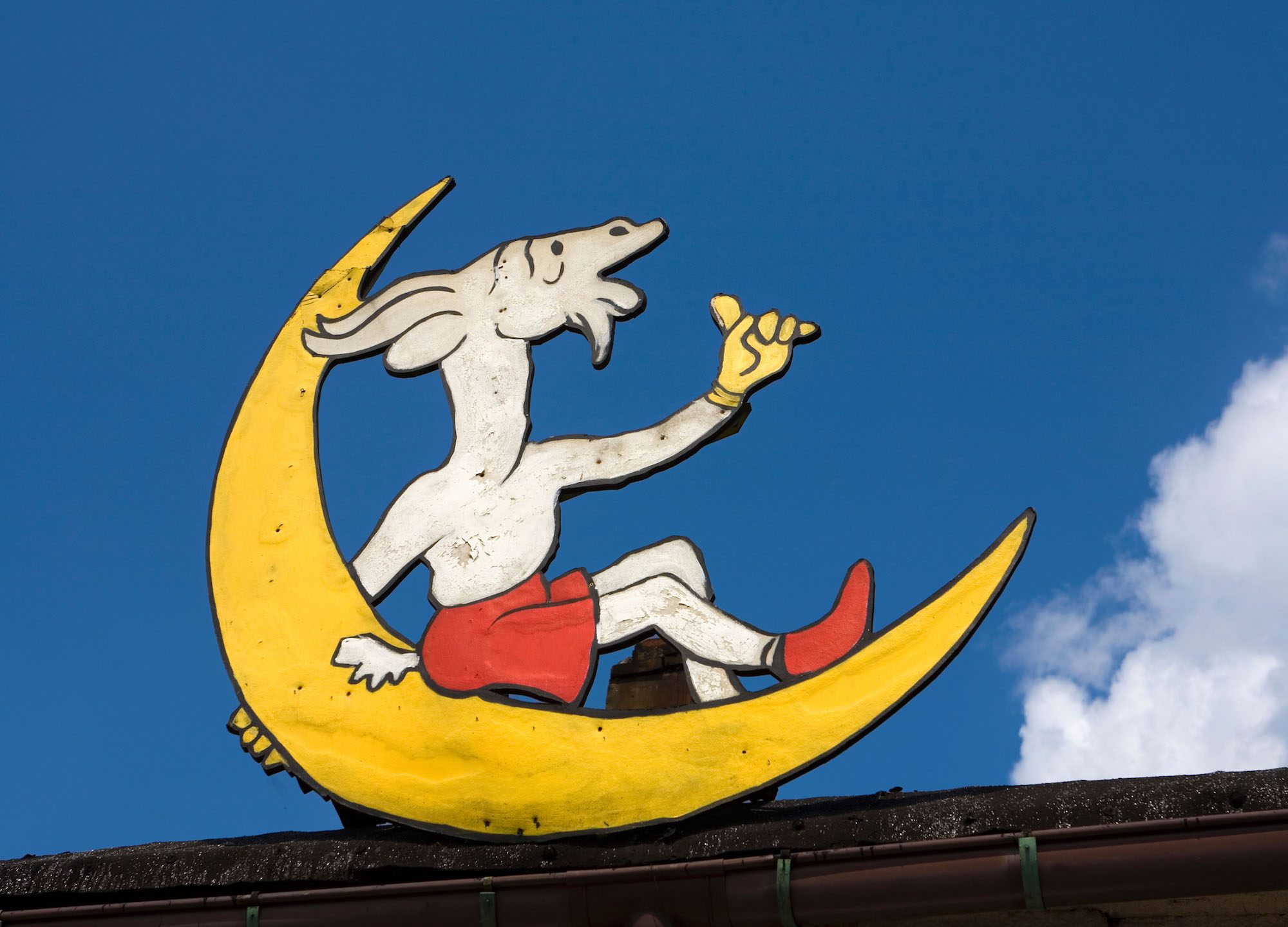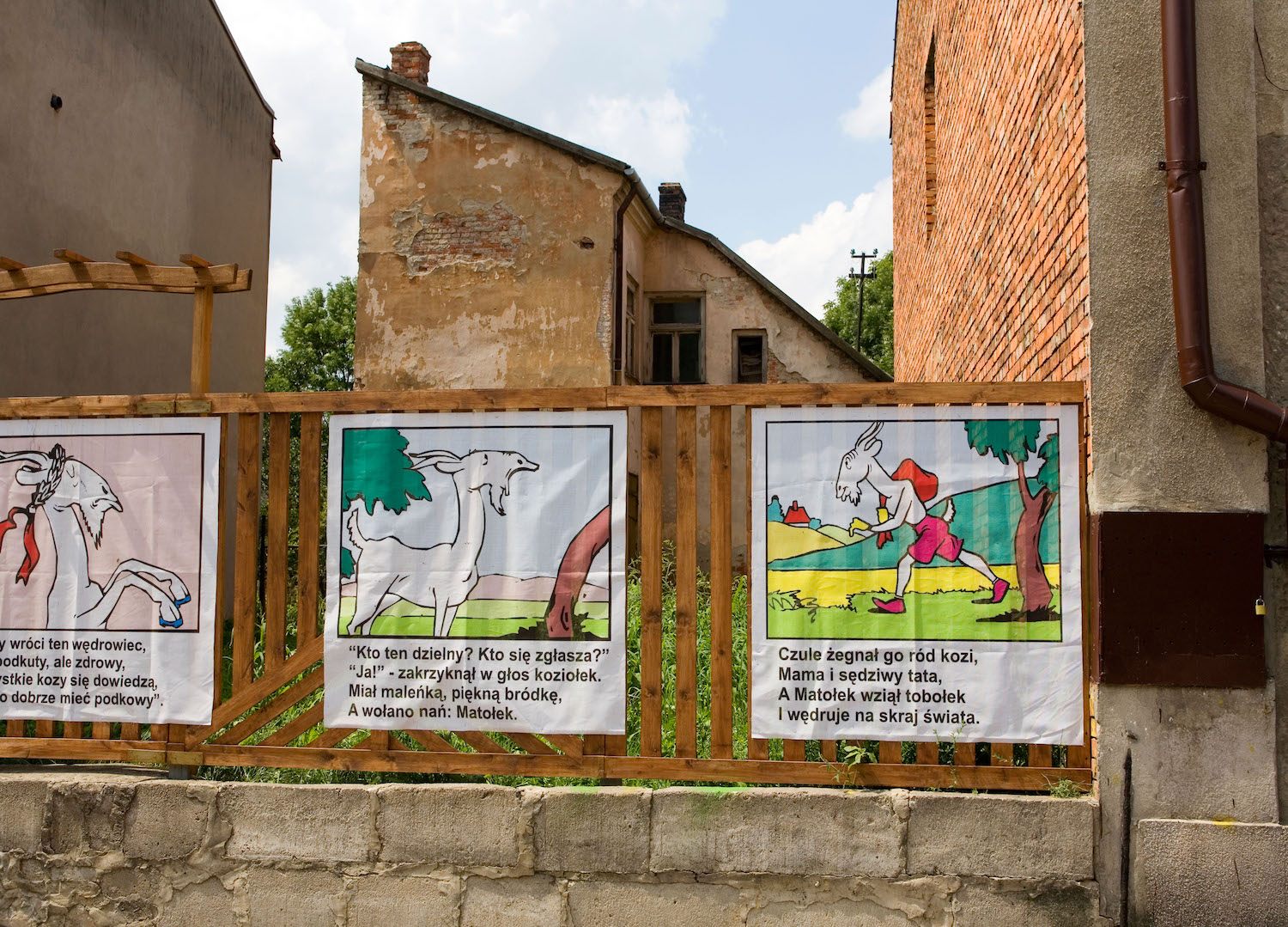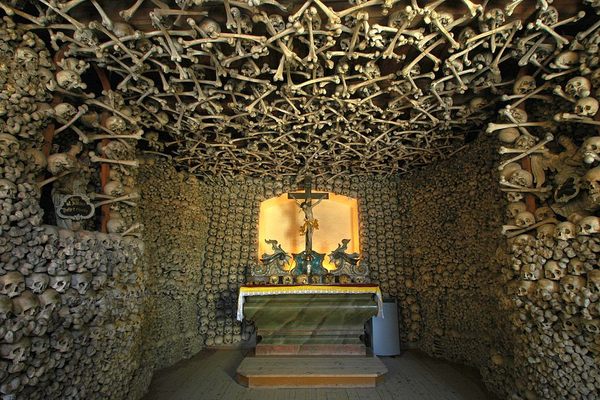The Cartoon Goat From Poland Who Wandered the World in Search of Shoes
Koziołek Matołek resonated with generations of Polish children.

In Pacanów, Poland, Koziołek Matołek—the Silly Billy-Goat, or the Dopey Goat—is famous. There’s a statue of him in the park at the center of town, and his image appears all over. Through all his wanderings, this town was Koziołek Matołek’s destination: He had heard it was possible to find shoes for goats here.
Created in the 1930s, Koziołek Matołek was the star of perhaps the most popular Polish kids’ books before World War II. Today, he is a considered classic character of Polish children’s literature, but is mostly unknown outside the country.
Kornel Makuszyński, the author of the Koziołek Matołek books—four in all—was a poet, journalist, and critic before he wrote children’s books. Born in 1884, he started writing poems when he was young, and in the goat books each illustration came with sing-song verses. The illustrator, Marian Walentynowicz, drew caricatures for newspapers and had traveled around the world. In the 1930s, foreign comics—Prince Valiant, most notably—were becoming popular in Poland, and publishers were interested in homegrown illustrated stories. In the origin myth of Koziołek Matołek, the two men decided to send their goat on a pilgrimage to Pacanów after meeting a man in a café who came from the tiny town.
But his adventures weren’t just about making it to Pacanów to find those shoes. Instead, Koziołek Matołek wanders the world with a naive, happy-go-lucky attitude that gets him into and out sometimes surreal scrapes. He meets bears and bunnies, squirrels and scarecrows, is chased up a tree and sent to jail. He tries to butt a car, meets a king, gets shot out of a cannon and lands on a whale, slides down a rainbow and ends up in China, and never quite gets what he’s looking for.
As a white goat in red pants (the colors of Poland), he’s a symbol of patriotism. His adventures are “perhaps the best Polish example of the traditions of ‘Jack tales,’” in which a foolish hero uses clever tricks to save himself from whatever situation he’s bumbled into, write scholars Justyna Deszcz-Tryhubczak and Marek Oziewicz, in a monograph on Polish fairy-tale films.
Koziołek Matołek “was very Polish,” says Oziewicz, a professor of children’s literature at the University of Minnesota. In these simple stories, it’s possible to find the markers of classic Polish literature, “including the idea that you’re exiled from your land and you have to travel to those faraway places, hoping to get back home, but always frustrated with all kinds of difficulties.”
Koziołek Matołek was more a popular hit than a critical one. After the war, though, with Poland under the control of the Soviet Union, both author and goat suffered. Makuszyński was banned from publishing, and his most beloved creation began to change.

Under communism, the world Koziołek Matołek lived in began to change. Before the war, when the goat looked out over Warsaw, he spotted the royal castle and church spire. After, it was a Palace of Culture dedicated to Joseph Stalin. The police were no longer enemies but friends. There were no more poor children, only “dear” children. and when he visited the Moon, the star that brings him back no longer has six points, like a Christmas star, but five, like the ones on the Soviet flag.
But Koziołek Matołek survived, like always. His stories have become classics, as has the television show he starred in for a few years in the 1970s. Pacanów now has a “fairy tale centre” celebrating children’s stories on the strength of its association with him.










Follow us on Twitter to get the latest on the world's hidden wonders.
Like us on Facebook to get the latest on the world's hidden wonders.
Follow us on Twitter Like us on Facebook